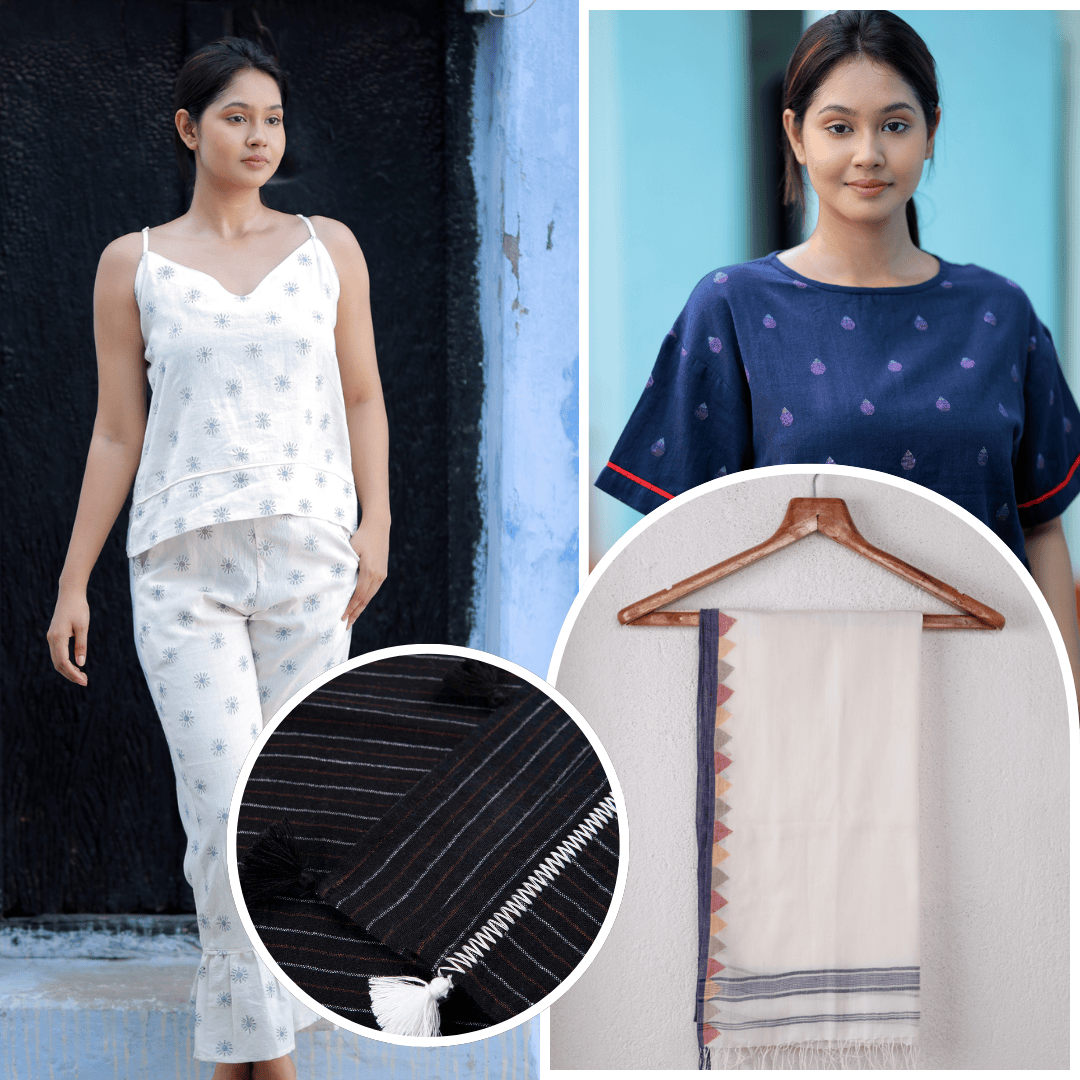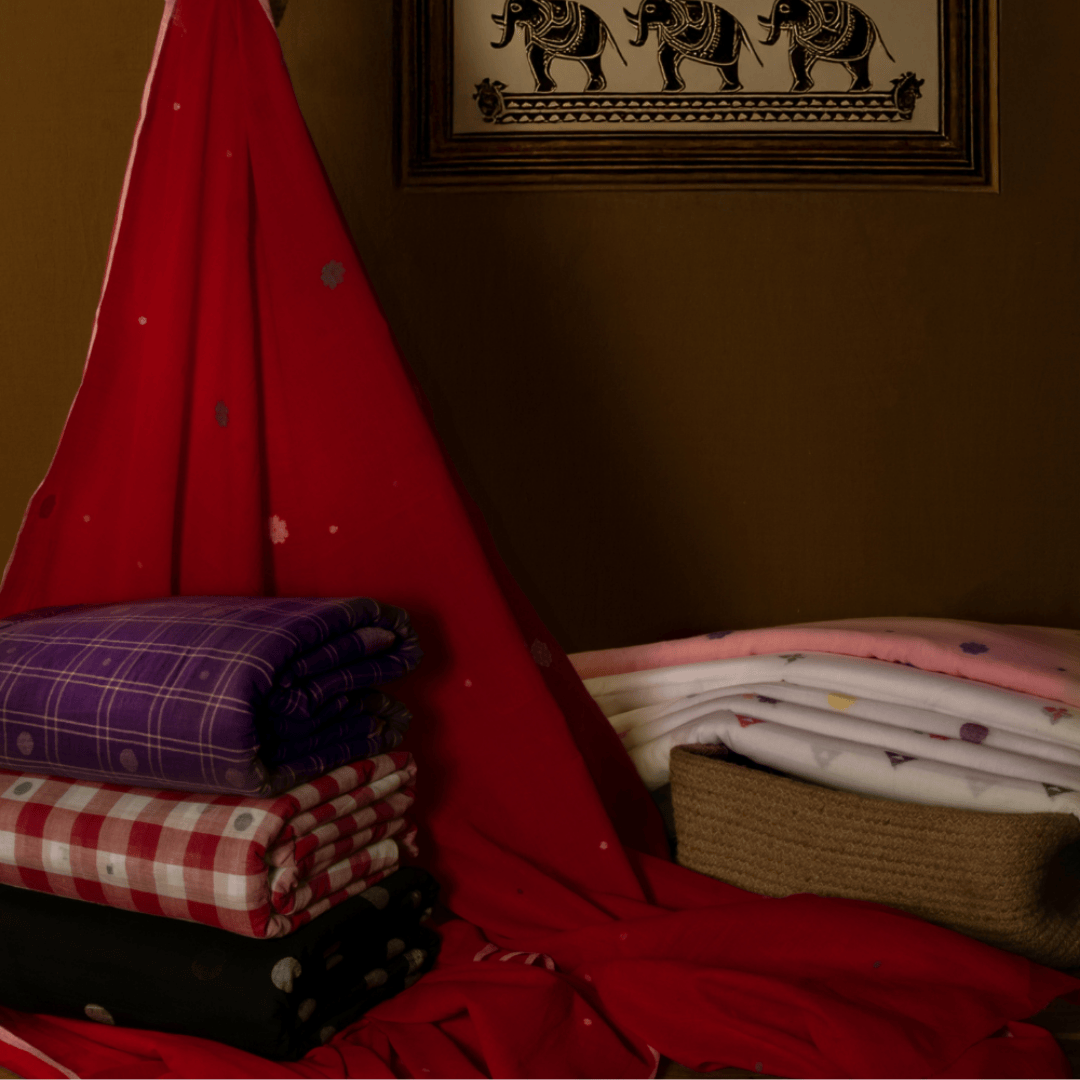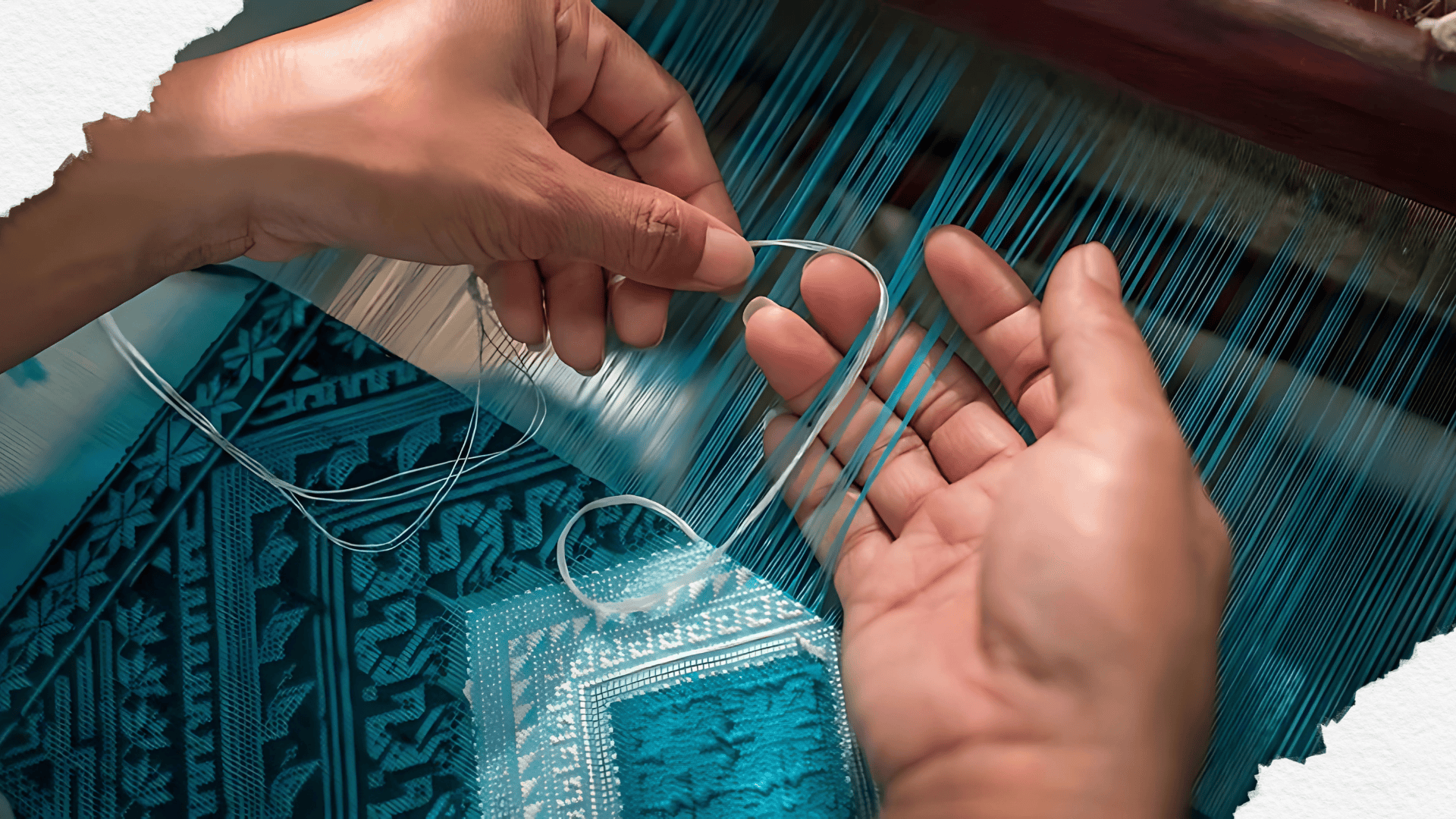
Beyond Borders: How Fashion Designers Reimagine Indian Handloom in Global Fashion

For centuries, Indian handloom has been more than just a textile tradition—it’s been a cultural language of motifs, fibers, and community. Today, that language is being translated into a global fashion vocabulary.
From New York to Paris, Milan to Tokyo, fashion designers are finding fresh inspiration in Indian handloom and textiles, proving that heritage fabrics can shape the future of design & fashion.
The Global Appeal of Indian Handloom
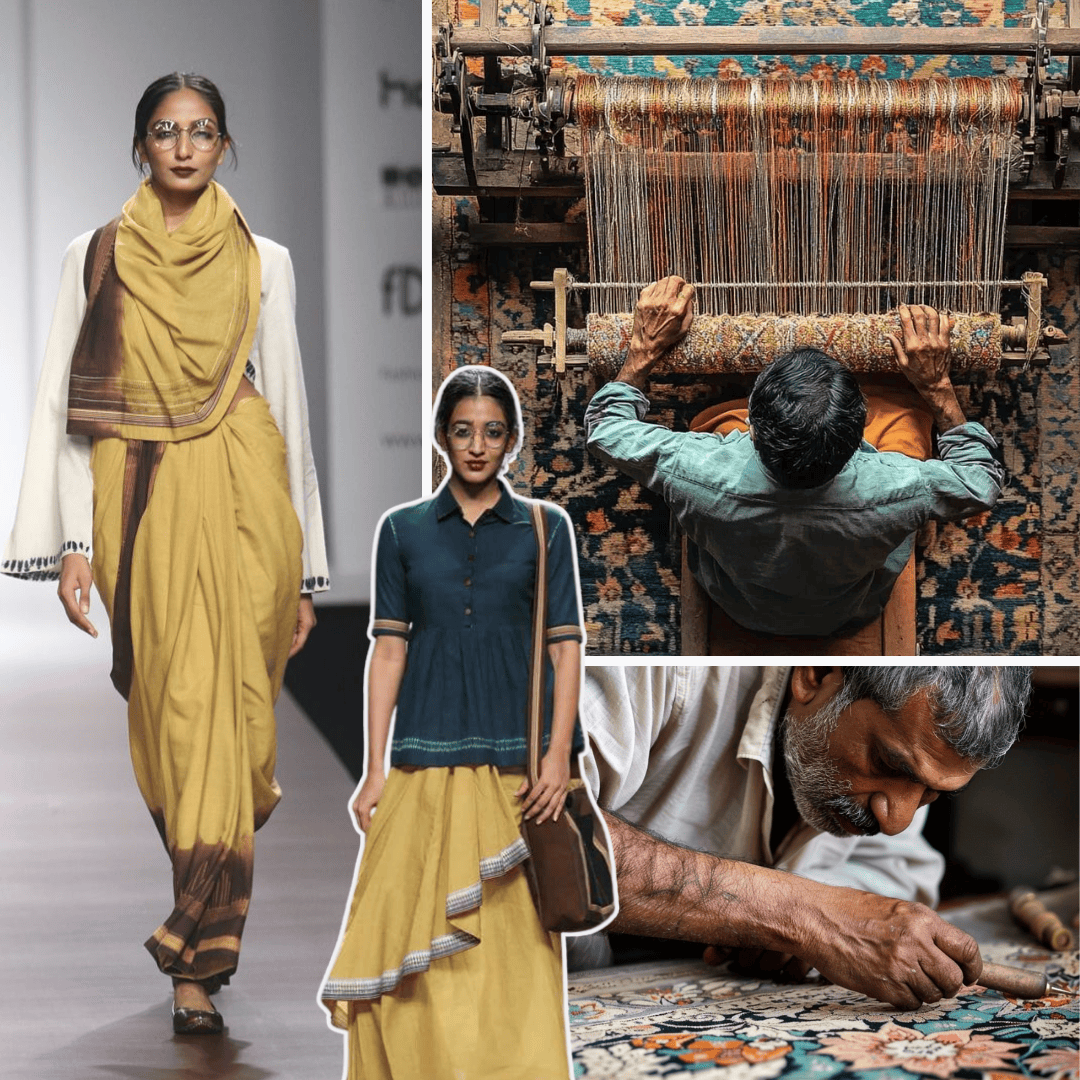
Why does Indian handloom resonate so deeply with fashion brands worldwide, The reasons are both aesthetic and ethical:
- Authenticity: Every weave carries the imprint of its maker, unlike mass-produced fabrics.
- Sustainability: Handloom uses minimal energy, biodegradable fibers, and eco-friendly dyes.
- Versatility: From Jamdani muslins to Khadi cotton, these textiles adapt easily to both luxury and streetwear.
As consumer demand shifts toward new fashion that is traceable and sustainable, designers are recognizing handloom as a ready canvas for innovation.
Global Designers Reimagining Indian Handlooms
- Luxury Runways Embrace Weaves
International labels are increasingly showcasing ikat, khadi, and jamdani in collections—styling them as coats, gowns, and structured separates instead of just saris. This reinvention is making Indian fabrics visible in the same conversations as Italian silks or Japanese denim.
- Streetwear Gets a Slow Twist
Young clothes brands in Europe and the US are experimenting with handloom checks and stripes, blending them with oversized silhouettes, hoodies, and co-ords. The result: new fashion that feels rooted yet contemporary.
- Indian Clothing Brands Go Global
Leading Indian clothing brands like Raw Mango, Eka, and Pero are bridging the gap—working with artisans while presenting collections at international fashion weeks. They demonstrate how handloom can meet global expectations of cut, fit, and finish without losing its handmade soul.

Revival Of Our Handloom Textiles
Thanks to the efforts of Indian designers, NGOs, and fashion houses, handloom has become a staple in contemporary fashion. Initiatives like the “Make in India” campaign and state-sponsored handloom expos have increased its visibility.
Designers such as Ritu Kumar, Sabyasachi Mukherjee, Gaurang Shah, Samant Chauhan and Raw Mango’s Sanjay Garg have played pivotal roles in reviving and reinterpreting handloom for modern wardrobes.
Designer Samant Chauhan’s Moscow Fashion Week 2025 collection - White Nights, featured silk and cotton from Bhagalpur, Bihar and Chanderi fabric from Madhya Pradesh—handwoven textiles deeply rooted in India’s cultural identity.
Handloom’s Global Leap

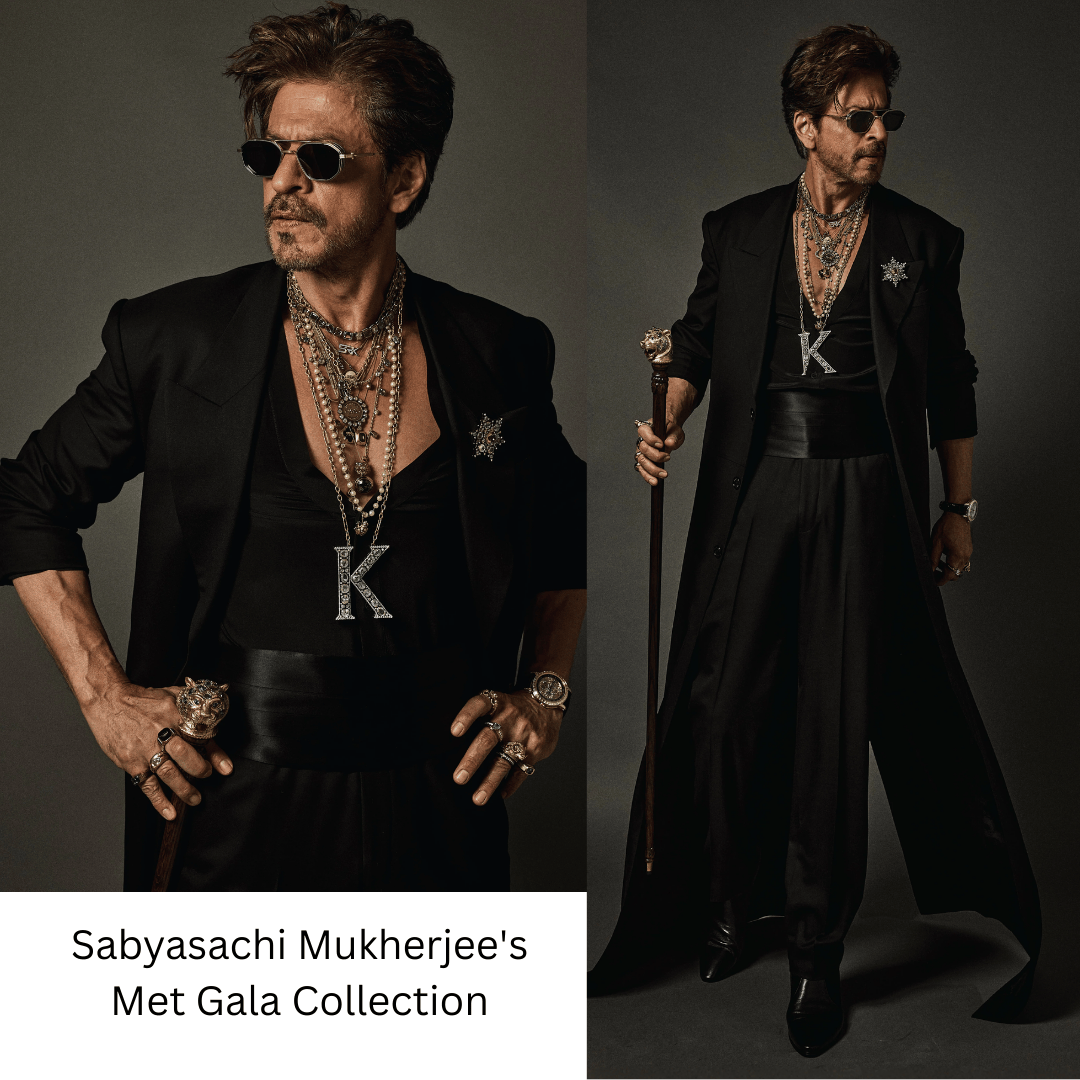
The Role of Fashion Designers in Reviving Handloom
Today’s fashion designer is not just a stylist but a storyteller and strategist. By collaborating directly with weaving clusters, designers help:
- Create market-ready adaptations of Indian handloom and textiles
- Preserve heritage techniques while ensuring artisans earn fair wages
- Position handloom fabrics as desirable in global design & fashion circuits
It’s not just about clothes—it’s about weaving narratives of cultural exchange and ethical luxury.
From Tradition to New Fashion
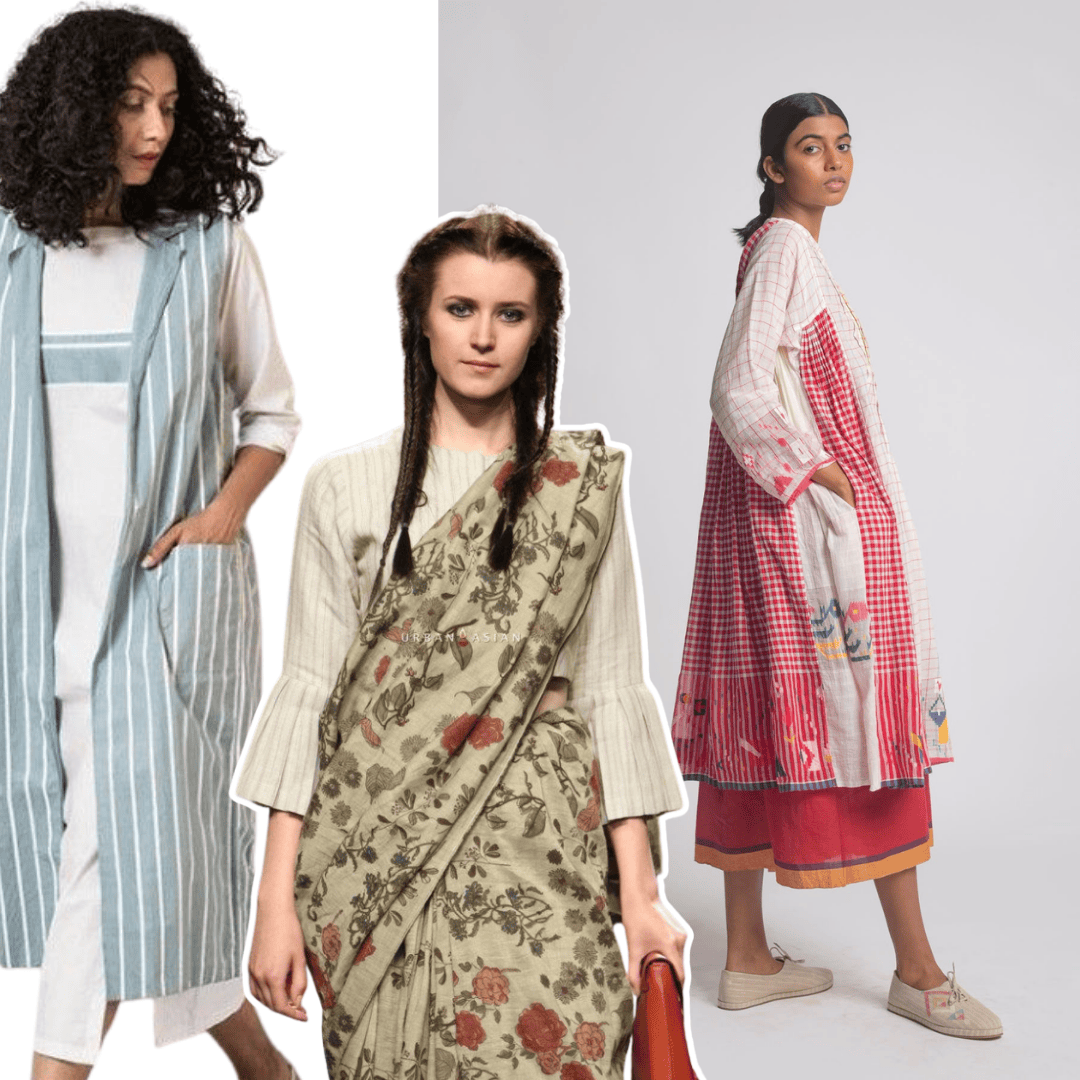
Some standout reimagining include:
- Jamdani muslin dresses paired with contemporary tailoring in European resorts.
- Khadi co-ords becoming staples in eco-conscious fashion brands targeting Gen Z.
- Handwoven silks entering red-carpet wardrobes, reworked into evening gowns.
This transformation proves that Indian handloom is no longer confined to saris—it’s redefining what new fashion looks like.
As global clothes brands face increasing pressure to reduce their carbon footprint, Indian handloom offers a ready solution:
- Sustainability: Lower emissions, local fibers, zero waste
- Exclusivity: Each piece carries artisan variation—no two are identical
- Heritage Value: Aligns brands with cultural storytelling and ethical sourcing
Anuprerna: Handlooms with a Global Lens
At Anuprerna, we connect rural artisans with international clothing brands and fashion designers, helping them co-create collections that merge tradition with trend.
By offering traceable supply chains, low-MOQ production, and sustainable dyeing, we make it easier for fashion brands worldwide to work with Indian handloom and textiles.
From khadi shirts to jamdani scarves, our fabrics are reimagined for designers seeking new fashion that is ethical, aesthetic, and globally relevant.
Explore Anuprerna’s Handloom Collections
Conclusion
The story of Indian handloom is no longer local—it’s global. As fashion designers and Indian clothing brands collaborate across borders, they’re proving that handloom isn’t just heritage; it’s the blueprint for the future of design & fashion.
In 2025 and beyond, the loom is not just weaving cloth—it’s weaving connections between cultures, brands, and a planet in need of more sustainable choices.
related questions
Why is Indian handloom gaining popularity among global fashion designers?
arrow_drop_downIndian handloom stands out for its authenticity, sustainability, and versatility. With rising demand for eco-conscious clothing, international fashion designers are embracing handwoven fabrics like jamdani, khadi, and ikat to create unique, low-impact collections.
How are Indian clothing brands using handloom textiles in modern fashion?
arrow_drop_downLeading Indian clothing brands are blending handloom fabrics with contemporary silhouettes. From khadi co-ords to jamdani dresses, they are making handloom relevant in both everyday wear and luxury markets. These innovations position handloom at the heart of new fashion trends.
What role do fashion brands play in supporting Indian handloom and textiles?
arrow_drop_downFashion brands provide a global platform for artisans by integrating their textiles into seasonal collections. This not only sustains traditional weaving clusters but also brings Indian handloom and textiles into mainstream design & fashion, ensuring long-term cultural and economic impact.
Is Indian handloom relevant in new fashion trends for 2025?
arrow_drop_downYes. From striped khadi shirts in menswear to ikat streetwear jackets and jamdani dresses on international runways, Indian handloom is shaping the future of new fashion. Its fusion of heritage with innovation makes it a cornerstone of modern design & fashion.
More Blogs

summer 2026 textile trends: the season of slow luxury

the color theory hack: instantly upgrade your style with the science of hues

the style blueprint: 5 simple rules to improve dressing sense instantly

top 5 textures to watch in fashion trends 2025

5 key design elements in fashion and styling behind every great look

vintage revival: which eras and silhouettes are making a resurgence in 2025
